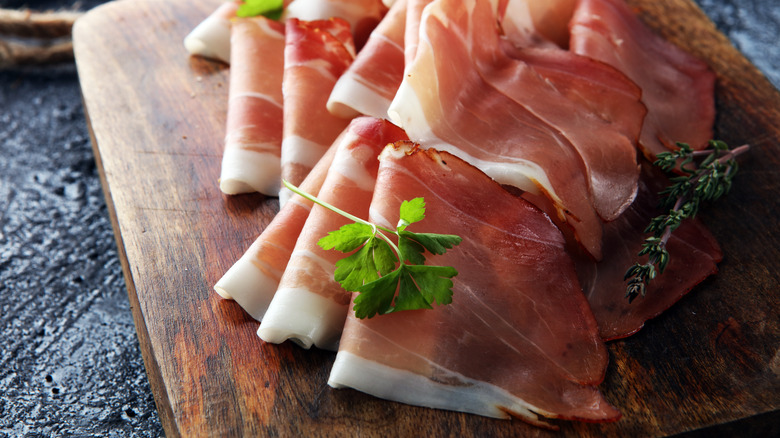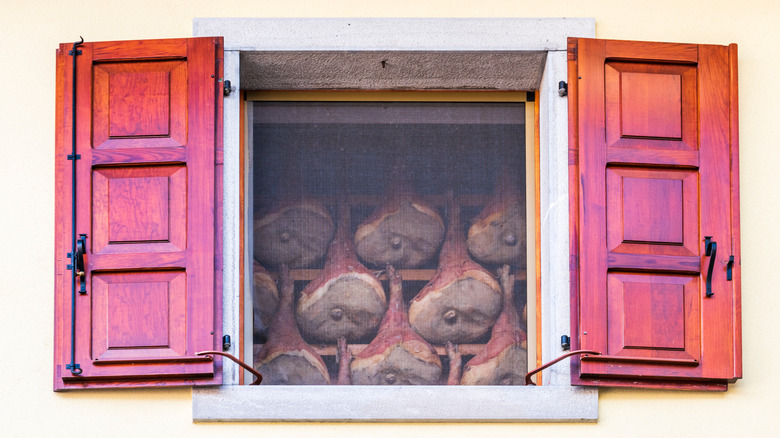How Does Italy's Wind-Dried Ham Differ From Prosciutto?
If you've dipped your toe into the world of authentic Italian meats, you've undoubtedly tried prosciutto. Maybe you tried the absolute best way to eat prosciutto, which is to allow its fat to melt on your tongue, or you paired the thin, salty meat with other foods. Prosciutto is a delicious pizza topping alongside caramelized onions, arugula, or figs, and crispy prosciutto chips may make for a crowd-pleasing snack at your next party.
While the word prosciutto literally means "ham" in Italian, the differences between the Italian meat and ham are significant. Ham is commonly smoked, whereas prosciutto is typically made by curing hind leg pork meat — never by smoking it. As with Neapolitan pizza, which has an entire organization dedicated to ensuring its authenticity in different pizzerias around the world, the Consorzio del Prosciutto di Parma is a non-profit that protects the integrity of a specific type of prosciutto, prosciutto di parma.
So, it's clear that Italians take the quality of their meat seriously. And while prosciutto is one of the more commonly known varieties, you may not have heard of their wind-dried ham, which differs from prosciutto in a few key ways.
Wind-dried ham tastes lighter and more natural than that of prosciutto
Tourists may not bother to visit the Italian Friuli Venezia Giulia region, but for cured meat enthusiasts, that would be a mistake. The Friuli Venezia Giulia region is located in the northeastern-most part of Italy and is home to the city of Trieste, where you'll find the delicate wind-dried ham.
According to Atlas Obscura, locals in Trieste dry hams out of their attics, where wind will drift through their windows and naturally cure the meat. The result is lighter and more subtly-flavored ham than prosciutto, which is known for its potent salty taste. A similar air-dried ham comes from the nearby town of San Daniele. Prosciutto San Daniele, or San Daniele ham, is subjected to the salty wind from the Adriatic Sea and the mountain air from the Alps, and only 27 producers can claim to make the authentic meat.
As you might expect from ham that has been tossed to the wind, the process of making air-dried ham is a bit more relaxed than for prosciutto. True prosciutto di parma is refrigerated at 80% humidity for up to a month, then needs to rest in rooms with 75% humidity. Prosciutto San Daniele, however, enjoys resting and maturing in ventilated rooms for up to 15 months, so the salty wind can seep through and flavor the meat. Once these steps are followed, you're left with a delicious ham, lighter than prosciutto but no less tasty.

